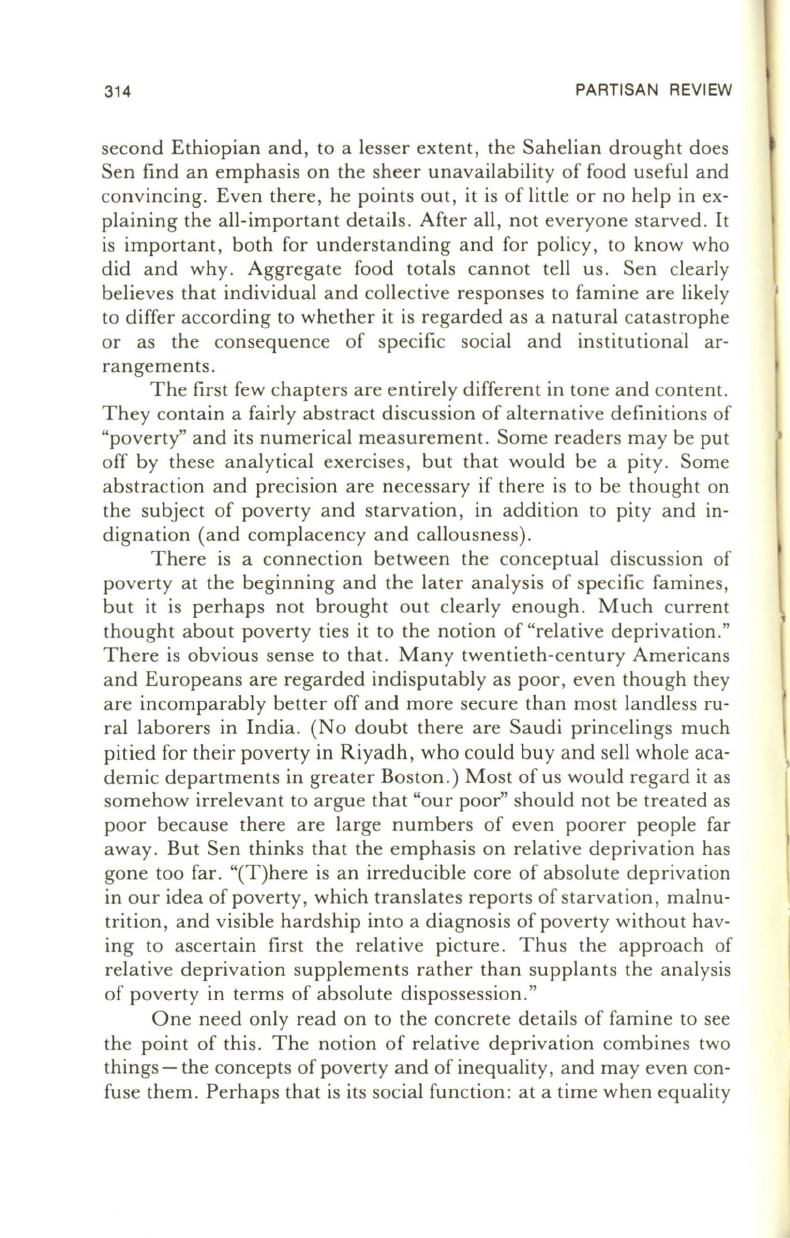
314
PARTISAN REVIEW
second Ethiopian and, to a lesser extent, the Sahelian drought does
Sen find an emphasis on the sheer unavailability of food useful and
convincing. Even there, he points out, it is of little or no help in ex–
plaining the all-important details. After all, not everyone starved . It
is important, both for understanding and for policy, to know who
did and why. Aggregate food totals cannot tell us . Sen clearly
believes that individual and collective responses to famine are likely
to differ according to whether it is regarded as a natural catastrophe
or as the consequence of specific social and institutiona1 ar–
rangements.
The first few chapters are entirely different in tone and content.
They contain a fairly abstract discussion of alternative definitions of
"poverty" and its numerical measurement. Some readers may be put
off by these analytical exercises, but that would be a pity . Some
abstraction and precision are necessary if there is to be thought on
the subject of poverty and starvation, in addition to pity and in–
dignation (and complacency and callousness).
There is a connection between the conceptual discussion of
poverty at the beginning and the later analysis of specific famines,
but it is perhaps not brought out clearly enough. Much current
thought about poverty ties it to the notion of "relative deprivation ."
There is obvious sense to that. Many twentieth-century Americans
and Europeans are regarded indisputably as poor, even though they
are incomparably better off and more secure than most landless ru–
ral laborers in India. (No doubt there are Saudi princelings much
pitied for their poverty in Riyadh, who could buy and sell whole aca–
demic departments in greater Boston .) Most of us would regard it as
somehow irrelevant to argue that "our poor" should not be treated as
poor because there are large numbers of even poorer people far
away . But Sen thinks that the emphasis on relative deprivation has
gone too far. "(T)here is an irreducible core of absolute deprivation
in our idea of poverty, which translates reports of starvation, malnu–
trition, and visible hardship into a diagnosis of poverty without hav–
ing to ascertain first the relative picture . Thus the approach of
relative deprivation supplements rather than supplants the analysis
of poverty in terms of absolute dispossession."
One need only read on to the concrete details of famine to see
the point of this . The notion of relative deprivation combines two
things - the concepts of poverty and of inequality, and may even con–
fuse them. Perhaps that is its social function: at a time when equality


